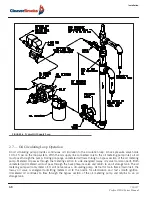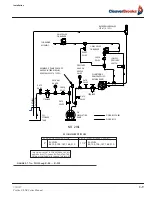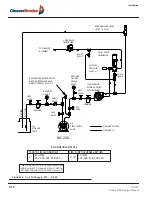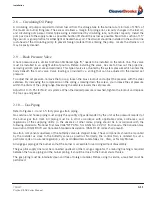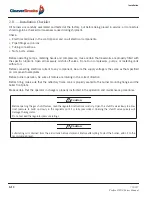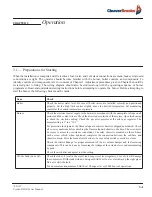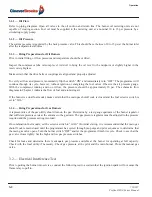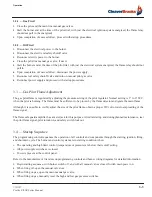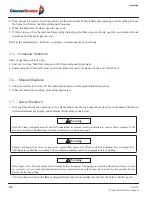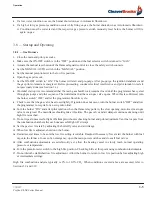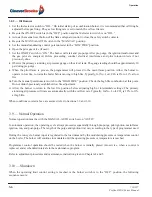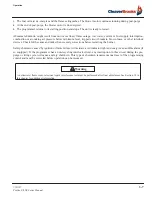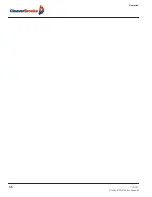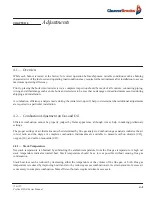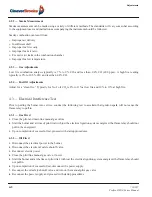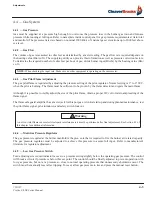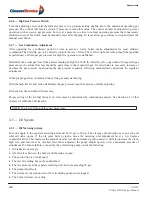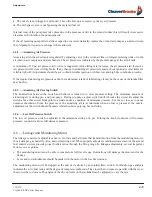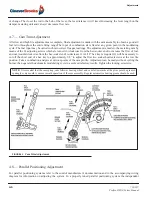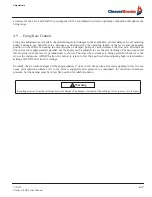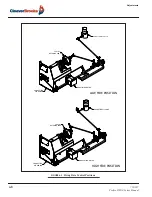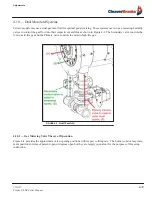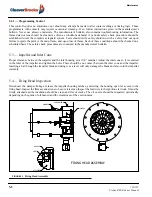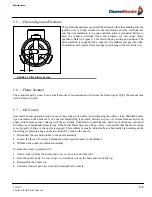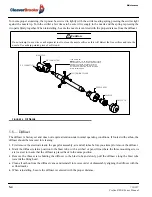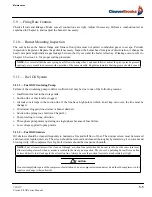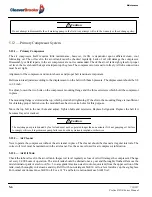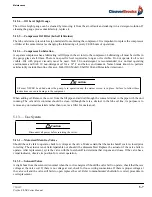
Adjustments
4-2
750-297
Profire E/LNE Series Manual
4.2.2 — Smoke Measurement
Smoke measurements can be made using a variety of different methods. The standards will vary somewhat according
to the equipment used, and instructions accompanying the instrument should be followed.
Smoky combustion can result from:
•
Improper air delivery
•
Insufficient draft
•
Improper fuel viscosity
•
Improper fuel-air ratio
•
Excessive air leaks in the combustion chamber
•
Improper fuel oil temperature
4.2.3 — Gas Adjustments
Low fire combustion analysis typically is 7% to 9% CO
2
and less than .04% CO (400 ppm). A high fire reading
typically is 9% to 10.5% CO
2
and less than .04% CO.
4.2.4 — Fuel Oil Adjustments
Adjust for a “clean fire.” Typically for No. 2 oil CO
2
is 8% to 11% at low fire and 10% to 13% at high fire.
4.3 — Electrical Interference Test
Prior to putting the burner into service, conduct the following test to ascertain that ignition spark will not cause the
flame relay to pull in.
4.3.1 — Gas Fired
1.
Close the pilot and main line manual gas valves.
2.
Start the burner and at time of pilot trial with just the electrical ignition system energized, the flame relay should not
pull in (be energized).
3.
Upon completion of successful test, proceed with startup procedures.
4.3.2 — Oil Fired
1.
Disconnect the electrical power to the burner.
2.
Disconnect the electric oil safety shutoff valve.
3.
Reconnect electric power.
4.
Close the pilot line manual gas valve, if used.
5.
Start the burner and at the time of pilot trial, with just the electrical ignition system energized, the flame relay should
not pull in.
6.
Upon completion of successful test, disconnect the power supply.
7.
Reconnect the oil safety shutoff valve and turn on the manual pilot gas valve.
8.
Reconnect the power supply and proceed with startup procedures.

